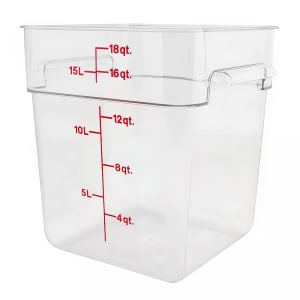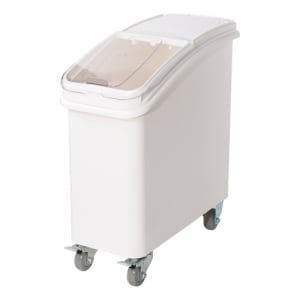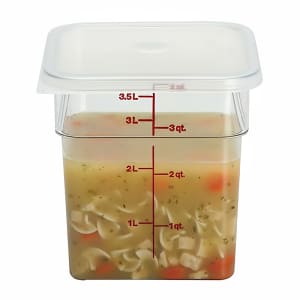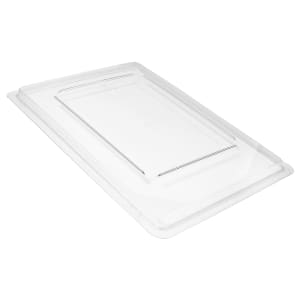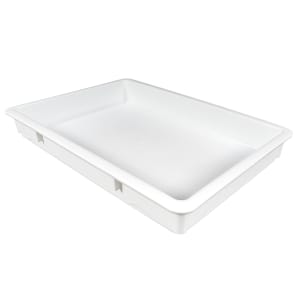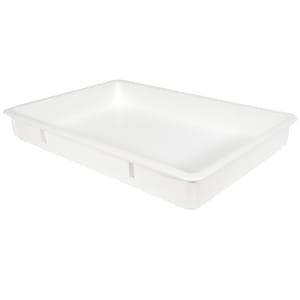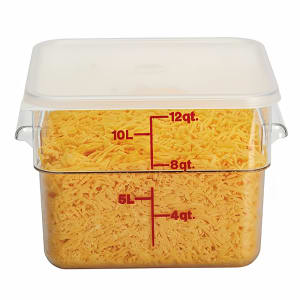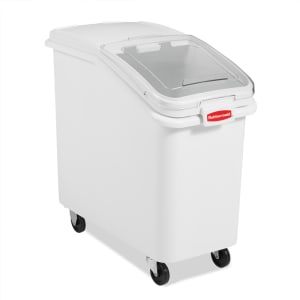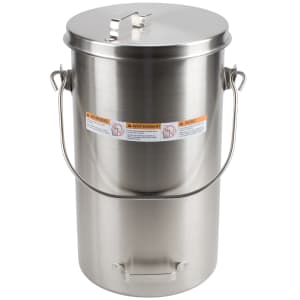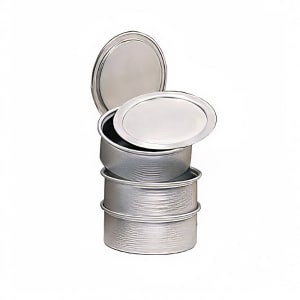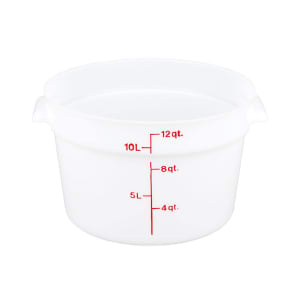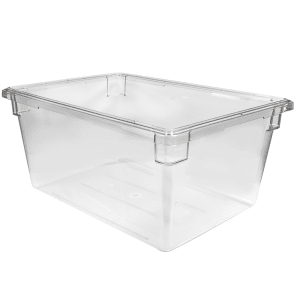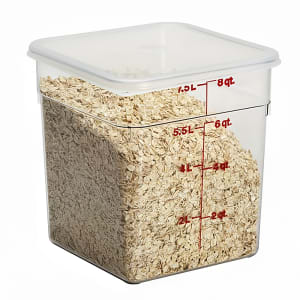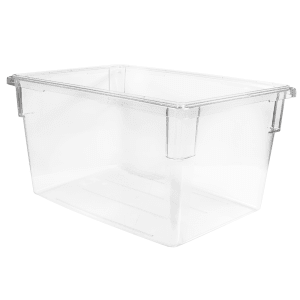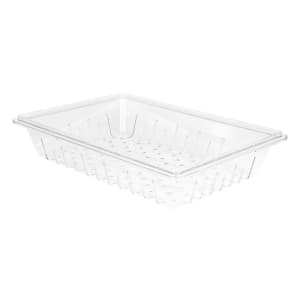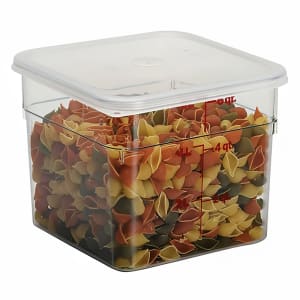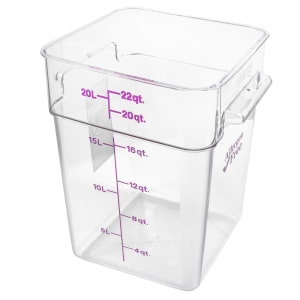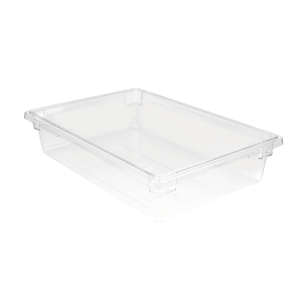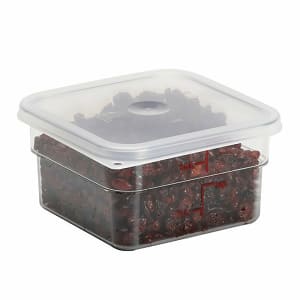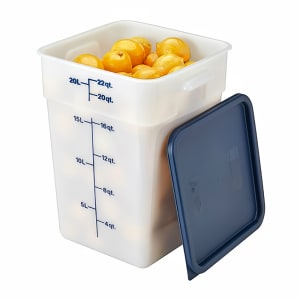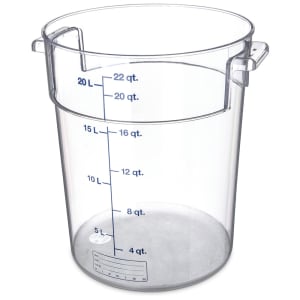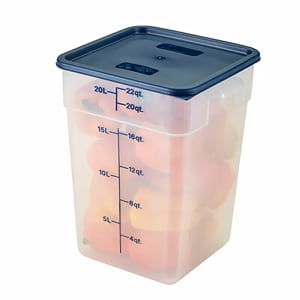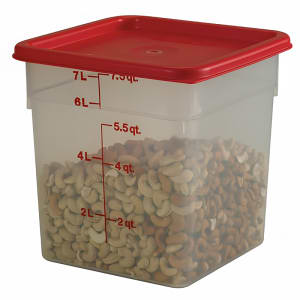Food Storage Containers
Commercial bulk food storage containers are necessary for any foodservice establishment; they keep food safe and fresh until it can be cooked and served.
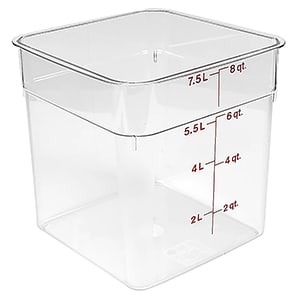
Square food storage containers require less space than round ones, making them an ideal solution for operations looking to maximize their cold or dry storage.
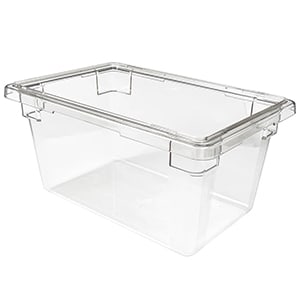
These large food storage containers are constructed from a durable clear plastic to give kitchen staff an unobstructed view of the products inside.

Store your dry ingredients safely and efficiently with our ingredient bins. Choose from a variety of sizes and accessories to match your business's needs.

Protect your dough during a crucial step in preparation by holding it in a proofing box or pan as it completes its final rise.

Ideal for storing dry ingredients and other types of product, round food containers can be paired with lids to keep product fresh. You can learn more here.
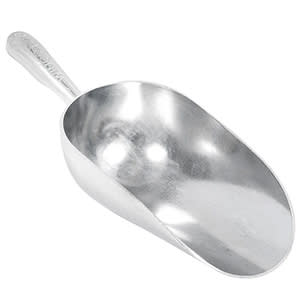
Aluminum, stainless steel, and plastic scoops in a variety of sizes and shapes are available to meet your kitchen's needs.
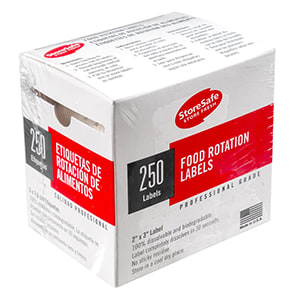
Promote food safety and freshness with food storage labels. Proper labelling ensures your food gets used in the appropriate order, reducing food waste.

Stock up on salad bar crocks to organize and serve salad dressings, condiments, and soups for your customers to enjoy.
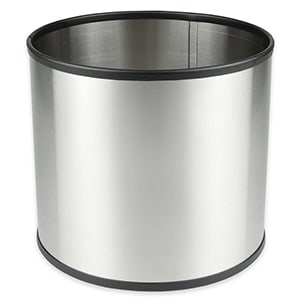
Keep your frozen treats fresher for longer with ice cream containers, available in a number of decorative styles that can double as display pieces.
Top In Stock Commercial Food Storage Containers
Safe Food Storage: What You Need to Know
Storing food safely can be challenging. Certain foods are safe to store for long periods of time when protected from potential contaminants, but other foods must be served within a few days of receiving them or they'll go bad and become unusable. Unsafe food storage presents a significant hazard to any foodservice operation as one case of food poisoning can generate enough negative press to shut down a business – not to mention the danger of the illness itself.
KaTom carries a wide variety of commercial food storage containers to ensure you have the tools necessary to store your food safely. Storage labels, ingredient bins, and food containers can all be found here, as well as advice on their proper use. This category contains some items, such as scoops and crocks, that aid in transitioning food from storage to a usable form.
Common Questions About Commercial Food Storage Containers
Why do I need special equipment to store food?
All the food you buy is going to come in some sort of packaging, so why pay more for added packaging? For one thing, you can't rely on the packaging of your food to be airtight or watertight unless the seller can guarantee it. If your packaging isn't resistant to air and water, your food will not last as long as it would in airtight packaging. Product that turns bad before you can use it is money out the door, but food storage containers prevent such waste by keeping food safe for extended periods of time. Well-organized storage areas also increase productivity because operators can find and access needed ingredients without sorting through a mess of boxes and bags.
Food storage labels contribute to both of these benefits. Beyond ensuring operators get exactly what they need from storage the first time, labels inform users of how long the food has been in storage and whether or not it is safe to eat. Food labels prompt staff to use the oldest ingredients first, ensuring nothing spoils. They are a key component of safe food storage and reduce the chance of a customer contracting a foodborne illness. Safety is the foremost reason to invest in commercial bulk food storage containers and associated items. The marginal cost of storing items properly is dwarfed by the potential loss of business that comes with customers eating food that isn't safe.
How should I use commercial food storage containers?
Drippage is one of the biggest dangers when it comes to safe food storage. If meat drips onto the veggies you use for salad (which will never be cooked), you'll be serving a tiny portion of raw meat to your customers. When organizing food storage, place your food items from the ground up in order of necessary cook time for safety. Poultry should be on the bottom, followed by ground red meat, and then whole cuts of beef or pork, followed by seafood; ready-to-eat food – such as vegetables – should be on top. This way, even if something does drip onto the food below it, the residue will be cooked beyond the necessary temperature for safety. Commercial food storage containers can prevent cross-contamination altogether, but if someone is careless, proper organization can provide another layer of protection.
Learn More About Commercial Food Storage Containers
-
A Guide to the Types of Food Containers
They come in a plethora of shapes and sizes!
- Five Products that Make FIFO Easy


